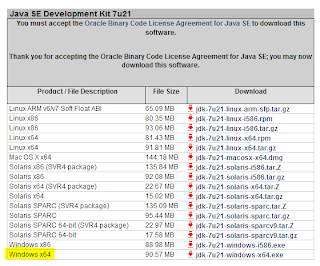You might recognize this as a CSV file. These files are often a text result of excel spreadsheets or output from some other program. With this file we want to match up the relationships of each task. Let's start with the conceptual organization of this data. Obviously we want to treat each line as it's own set of information with three distinct parts. In Java we would use Classes to represent this data. In Groovy we can write a class like so:
In line two we are creating a new container, a new well-defined backpack. In lines 4-6 we use the dot operator "." to peak inside the Thing called a_thing and give each attribute its own value. To test if everything is working as expected print the object.
println a_thing
Ut oh.. what happened? What is that thing (pun intended)? That is called the "address of" our created
Thing, which you really don't need to know anything about. Every time you run the program that will look different. 'Nough said. So how do we easily view the data we just created? Groovy actually provides a method called
dump() that will look inside your object and try to give you a textual representation of it's contents.
println a_thing.dump()
// title=Tree rel_type=Parent Of o_title=Branch
Now that looks pretty sweet. You should get an output like what's in the comment in line 2 above. But wait- where does
dump() come from and what else is out there? Well, to understand where
dump() comes from we have to give a short intro to Object Oriented Programming. Remember in Grammar class, when you learned that a Noun was a person, place, or thing? This means that everything tangible has a sort of root attribute: it is a noun. All nouns have some kind of name, some kind of weight, and other things that describe them all. In contrast, not all nouns have eyeballs. Humans, which are nouns, have eyeballs. So this way of qualifying everything under a single root and then recursively grouping, like the Latin names of living creatures, is core to OOP. In Groovy, that root "noun" is called an Object. All objects have a set of core
functions like
dump(),
each(), and
toString(). So that's where babies- I mean
dump()'s come from: logical groupings of data.
Checkpoint: Add a int member to the Thing class and dump the contents.
Abstract & Simplify
Now, in Groovy we have a few ways to simplify this classic Java approach. Instead of listing the parameters one by one, we can just call out each one in the constructor of the object like so:
Thing my_thing = new Thing(title: 'Tree', o_title: 'Branch')
println my_thing.dump()
You'll notice this time that we chose not to set a relationship. In the output you see a
null value as you should expect. So we've just minimized the number of lines of code and it's just as readable.
Now, we've talked about Lists, but if we stare at our
Thing class we see that it resembles a phone book (where names
map to numbers). Each attribute name maps to a String value. So we can get a further abstract view of the data and represent the object creation with a Map:
def my_thing = [ title:'Tree', o_title: 'Branch' ] as Thing
println my_thing.dump()
Notice the syntax of the map. Where a List
was [], a Map is
[:]. One the left side of the colon is your
key on the right side is your
value. Consdier a phonebook: left side is a name of a person and the right is his phone number (or vise versa). The structure of the mapping is up to you and your needs. We don't need the
new Java keyword because Groovy by default creates a new List or Map when you use this syntax. You also see that we can replace
Thing with the keyword
def and everything works peachy. It works because we've thrown in the clause '
as Thing'.
as is a keyword in Groovy that lets you duck-type or cast an object from one type to another.
Checkpoint: Remove the as Thing clause and see how the output changes. Hint: remove the .dump() call to get cleaner output. Next, add a rel_type of "Parent Of" to the map. Finally, add the as Thing statement back and compare outputs.
Let's talk about this Map. To access the members of a Class we use the dot operator in Groovy right? Well, to access the keys of a Map we can use it in the very same way as seen below in line 2. In fact, we can pull this information out of our map object in a bunch of different ways.
def my_thing = [ title:'Tree', o_title: 'Branch' ]
println "The title: " + my_thing.title
println "The title: " + my_thing.'title'
println "The title: " + my_thing['title']
def title = 'title'
println "The title: " + my_thing[title]
But wait a minute, if we can describe our data in the form of map, and we don't loose any data or any ability to manipulate the data, why do we have this whole
public class Thing blah blah blah!?
Excellent question, and the answer is... we don't! I showed you the concept of Classes because Java was built on an Object Oriented paradigm and the sooner you begin to think of your data as just objects with relationships to each other, the better programmer you'll be. Finally note that in many cases of complex systems it's good to have well defined types, but for simple scripting like what we're doing Lists and Maps can get almost any job done.
Checkpoint: Represent all the data in our text file as three maps.
Answer:
def tree = [id: 1, title:'Tree', o_title: 'Branch', rel_type: 'Parent Of']
def branch = [id: 2, title:'Branch', o_title: null, rel_type: null]
def leaf = [id: 3, title:'Leaf', o_title: 'Branch', rel_type: 'Child Of']







